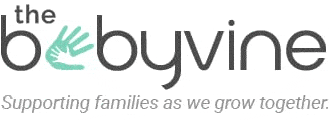How much sleep are you getting? If you’re like most young parents, the answer is very little. If you are waking night after night to soothe your baby back to sleep, you may be thinking that it’s time to do something about it. You may even be noticing that the lack of sleep is affecting your relationship with your partner and your other children. Yet, it doesn’t take long to read an article or two or three about the dangers of sleep training. So, is sleep training safe, or does it cause undue stress for your baby? The answer may surprise you.
What Is Sleep Training?
Sleep training or sleep coaching is based on the belief that sleep is a learned skill. Your baby needs to be taught to put herself to sleep without your continued assistance. Going to sleep on your own is an important life skill, and sleep training gives you the tools to teach your baby.
When Can I Start?
Sleep training can begin when your baby is around four – six months. Keep in mind that all babies are different, and you will want to check with your child’s doctor before making the decision to sleep train. As long as there are no underlying medical issues, most babies are developmentally ready at four to six months to start sleeping through the night or at worst have one feed, so this is the ideal time to start.
How Can I Sleep Train?
To teach your baby how to fall asleep on her own, you need to start by creating a simple and consistent bedtime routine. Place the baby in the cot drowsy but awake, and sit next to the cot. If your baby needs reassurance, a gentle word and an occasional touch, provide it, but encourage the baby to go to sleep on her own. Pick her up if she becomes hysterical, but don’t rock her to sleep. As your baby adjusts to your new routine, start moving farther from the cot every couple of nights as she gains confidence to fall asleep unassisted. Soon you will be outside of the room. Eventually you should find that your baby no longer relies on your presence and support to go to sleep.
This form of gentle sleep training is in contrast to the more intense sleep training methods that involve allowing your baby to cry it out (CIO) or controlled crying which means you go in and out the room for a length different periods and at the end she collapses from exhaustion. A gentle sleep technique teaches self-soothing, while also giving you the ability to provide support and love when it’s needed. This is a method most mums are comfortable with as they seek to get back their sleep and teach their babies this important life skill. Once your baby learns to go to sleep without any ‘sleep crutches’, you will find that she is able to soothe herself when she wakes in the middle of the night.
Will My Baby Cry?
Yes, babies will cry while learning how to self-soothe. This does not mean they are in distress or are suffering. Crying is a baby’s way of telling you that something isn’t what is expected or isn’t what she wants. A little bit of fussing or whimpering, not complete hysteria or distressed, is fine and healthy during this process, and it won’t have a long-term negative affect on your baby.
What is Toxic Stress?
What exactly is toxic stress? Toxic stress results from frequent and prolonged abuse and/or neglect. According to Harvard University’s Centre on the Developing Child, this kind of prolonged activation of the stress response systems can disrupt the development of brain architecture and other organ systems and increase the risk for stress-related disease and cognitive impairment.
Scary, right? This myth is especially cruel because it’s frightening. Fortunately, you can put your mind at ease, because in loving, healthy families, this simply will not happen.
Best Result
Your baby learns to self settle, sleep and stay asleep.
You regain your sleep and have the ability to keep your family and your marriage strong.
For further information on my gentle technique don’t hesitate to call me.
We all love sleep!!
Published for The Jewish Report















